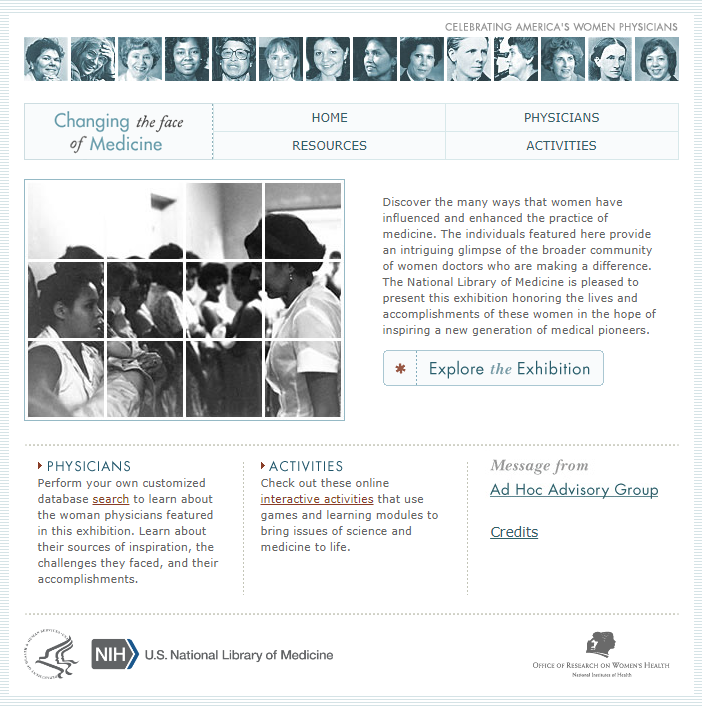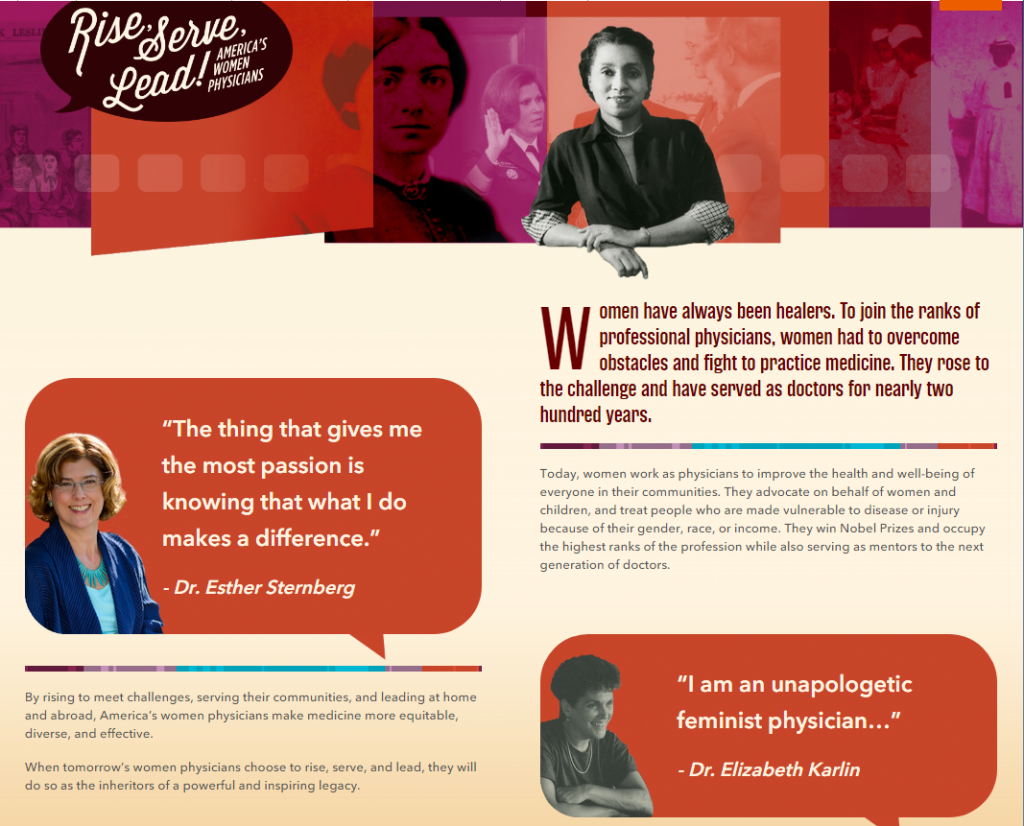Mar
11

Posted by Carolyn Martin on March 11th, 2019
Posted in: Health Observances, K-12
Tags: NLM Traveling Exhibits, physicians
In observation of Women’s History Month, each week of March the Dragonfly will feature a National Library of Medicine exhibit that highlights the history of women in health, science, and society. This week highlights women physicians through two exhibits: ” Changing the Face of Medicine” and “Rise, Serve, Lead! America’s Women Physicians“
Elizabeth Blackwell was 28 years old when she graduated from medical school in 1849 and became the first woman to receive an MD. However, she was not allowed to practice medicine by the medical community. She and other women have faced many obstacles on their path to practicing medicine. The first Native American woman to receive a medical degree, Susan Le Flesche Picotte, was paid very little as a practicing physician on a reservation in comparison to a military doctor and would often have to pay out of her own pocket if the Bureau of Indian Affairs ran low on supplies. In 2017 more women than men entered medical school for the first time. However, many women physicians continue to face obstacles. One example is that women physicians who have families tend to shoulder more of the childcare and household duties compared to their male colleagues. Another factor is that more men are in leadership and administration roles as well as medical school faculty. Many female physicians face gender bias and discrimination from both their male colleagues and from patients. But some studies reveal that female physicians have better communication with their patients and better patient outcomes. Despite the growth of women in medicine, more progress is needed to continue to close the gender gap.

The National Library of Medicine continues to offer its now retired exhibit, Changing the Face of Medicine: Celebrating America’s Women Physicians which honors the lives and achievements of women in medicine. Women physicians have excelled in many diverse medical careers. Some have advanced the field of surgery by developing innovative procedures. Some have won the Nobel prize. Others have brought new attention to the health and well-being of children. Many have reemphasized the art of healing and the roles of culture and spirituality in medicine. The National Library of Medicine honors the lives and accomplishments of these women in the hope of inspiring a new generation of medical pioneers through this online exhibition.
The online exhibit features a number of engaging activities including a searchable directory of physicians by ethnicity, location, specialty and medical school. Short biographies and images of the featured physicians is included. Lesson plans for K-12 and higher education are readily available along with teacher resources. Online activities about the human body are available to learn how the body works but also highlights how physicians have improved our lives. Use this NLM exhibit resources to promote STEM and encourage students to enter the health professions, especially to increase the career opportunities for women and other underrepresented groups and therefore providing greater access to healthcare and healthier communities.
NLM recently announced its newest exhibit, Rise, Serve, Lead! America’s Women Physicians which highlights the lives and achievements of over 300 women physicians who have made a difference through their medical practice and research, work as activists, service as administrators, and mentorship to the next generation of physicians. It presents a selection of the physician biographies featured in the 2003 NLM exhibition Changing the Face of Medicine: Celebrating America’s Women Physicians, showcasing the work of these doctors to connect to a contemporary audience.

The online content of Rise, Serve, Lead! includes an education component featuring a new K-12 lesson plan and a digital gallery of works from NLM Digital Collections. These books and journal articles were authored by some of the doctors profiled in the exhibition and give a view into both their scientific research and experiences in a male-dominated field.
Both exhibits highlight the contributions of women physicians and their persistence and dedication in a career field which was not often welcoming but which has greatly benefited from their presence.